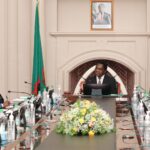Zambia’s mining industry is experiencing a remarkable revival, fueled by strategic initiatives aimed at revitalizing key operations such as Mopani Copper Mines (MCM), Konkola Copper Mines (KCM), and emerging sites across the country. This resurgence is poised to strengthen the mining sector as a cornerstone of Zambia’s economic development, with particular emphasis on youth empowerment and job creation.
Mopani Copper Mines Revival
A key highlight in Zambia’s mining resurgence is the successful restructuring of Mopani Copper Mines. In 2024, a landmark $1.1 billion investment deal was finalized with Delta Mining Limited (DML), granting DML a 51% stake, while ZCCM-IH retains 49%. The funds are being channeled towards clearing Mopani’s liabilities, supporting capital projects, and stabilizing operations—positioning the mine for sustainable long-term growth. This restructuring is already yielding positive results, improving operational performance and creating jobs. The revitalization of Mopani aligns with the government’s ambitious vision to boost copper production to 3 million metric tonnes annually. This increase in production is set to open thousands of new opportunities for skilled and unskilled labor in Zambia’s Copperbelt, making it a significant benefit for the country’s youth and future generations.
Konkola Copper Mines Developments
Konkola Copper Mines, a major player in Zambia’s mining sector, is also undergoing a transformation. Historically faced with financial and operational challenges, KCM is now the focus of renewed government efforts to resolve these issues and ensure its continued viability. As a critical economic asset in the Copperbelt, KCM’s revitalization promises to stabilize local jobs and contribute to national export revenues. The government’s proactive approach is expected to ensure KCM’s long-term operational success, securing both employment and economic growth for the region.
Investments in Emerging Sites
The Zambian government’s commitment to the mining sector is further evidenced by major investments in emerging mining sites. One such project is the reopening of Shaft 28 in Luanshya, after 20 years of dormancy. This project, which exceeds $1 billion, is expected to create over 3,000 direct and indirect jobs, providing a sustainable source of livelihood for local communities. In addition, the Kasenseli Gold Mine, which had experienced operational halts, is seeing a resurgence. The government is working to boost gold production, focusing on increasing output within a structured and regulated framework. This shift toward diversified mining production is expected to enhance Zambia’s mining portfolio and generate substantial returns.
Mining for Zambia’s Future
The revival of Zambia’s mining sector is not just about returning to past successes but using mining as a key tool for national economic transformation. With new infrastructure projects, advanced exploration initiatives, and significant capital investments, Zambia’s mining renaissance will likely lead to greater technological development and skill transfer. These efforts are crucial in preparing the youth to participate in the sector, offering them training and employment opportunities that will empower them to shape the country’s future.
As Zambia’s mining industry regains momentum, the optimistic outlook offers hope for a brighter future, particularly for the nation’s youth. Opportunities for training, employment, and entrepreneurship are on the rise, positioning the younger generation to seize the benefits of this economic revival.
While Zambia’s mining industry has faced setbacks in the past, the recent strides being made are undeniable. The investments and strategic plans unfolding in the Copperbelt and beyond are laying the foundation for a more prosperous and sustainable mining sector. As Zambians, we must not only celebrate this progress but also focus on learning from these developments and actively positioning ourselves for greater participation and ownership in the sector. There are significant opportunities for the youth to align with the industry’s growth and secure their future.






